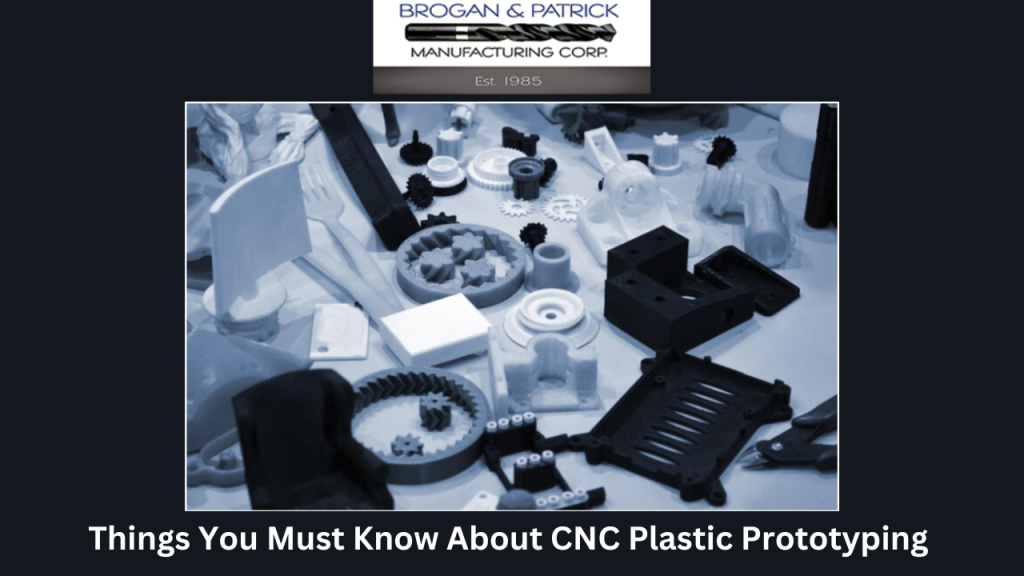Things You Must Know About CNC Plastic Prototyping
Plastic prototype making is gaining popularity, as they help businesses to assess the feasibility of a product idea, test the functionality of a design, and make necessary changes before mass production. Plastic prototypes are produced using various techniques and CNC machining is the most popular among them. This post discusses this technique and importance of CNC plastic prototypes in detail.

CNC Machining for Plastic Prototype Making
CNC (Computer Numerical Controlled) machining is a process that uses computer-controlled machine tools to create products with high accuracy and repeatability. There are many benefits to using CNC machining to create prototypes. The following are a few amongst the many:
- The technology can create CNC plastic prototypes with very tight tolerances, which is often important for products that need to meet certain performance standards.
- CNC machining can produce prototypes with intricate features that would be difficult to create using other methods.
- It is a cost-effective method and allows for a high degree of accuracy and detail.
- It can be used to produce prototypes in a wide range of sizes and shapes.
Discussing Four Major Scenarios that Call for CNC Machining for Plastic Prototype Making
There are many different scenarios that call for CNC plastic prototypes, such as when a company needs to create a new product prototype or when they need to produce small batches of parts for testing. In some cases, CNC machining will be the only option for creating a certain type of prototype or part.
Following are the other major scenarios
- Fine Details: If you have a plastic prototype design that features tiny details, it is recommended to consider CNC machining as your manufacturing method. CNC machining can produce very precise results, so it is perfect for prototypes that need to be exact. This type of machining can create CNC plastic prototypes with very fine details that other methods simply cannot match. Plus, CNC machining is a relatively quick and easy process, so you can get your prototype up and running in no time.
- Fine Surface Finish: CNC machining can help achieve a high surface finish quality by using a variety of machining techniques, including grinding, polishing, and buffing. If you need a high-quality surface finish on your plastic prototype, CNC machining is the way to go. This type of machining can give your prototype a smooth, precise finish that is perfect for prototypes that will be used for display or testing purposes.
- Difficult to Machine Materials: CNC machining is a versatile manufacturing process that can be used to create parts from a wide range of materials. The method can be used to create plastic parts from a variety of materials, including ABS, PVC, PEI, POM, and PEEK, among several others.
- Fast and Adaptable: If your plastic prototyping requires an adaptable and fast machining method, CNC machining is a good option to consider. CNC machining is also an adaptable machining method that can be used for a wide range of applications, including prototyping, low-volume production, and even mass production.
Overall, there are many different ways to create prototypes for plastic products. But if you want to create a prototype that is accurate and precise, then CNC machining is the best way to go.
Adding to it, when it comes to your plastic prototypes, it is important to work with a leading CNC machining shop like Brogan & Patrick to get them manufactured quickly and accurately. Working with the best name in the market will ensure that your prototypes are made to the highest standards and that they meet your specifications. Partnering with a trusted shop is also a good way to ensure that your prototypes are made in a timely manner. The team at the shop will work with you to understand your timeline and deliver your prototypes that exactly matches with the specifications given.

